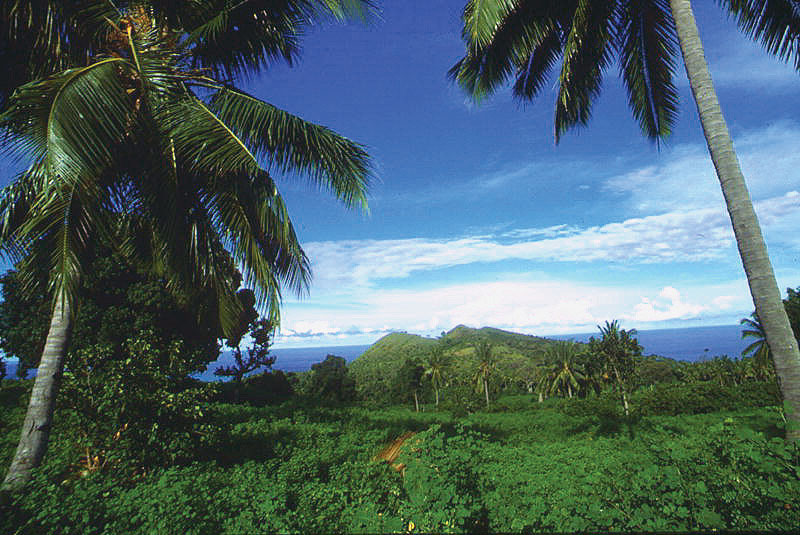With COMOROS-GUIDE you are on your way to the islands
Grande Comore, home to the capital Moroni, is the most diverse and perhaps the most travel-friendly of the Comoran Islands. Moroni is alive. The medina (old town) is reminiscent of so many others in Africa and the Middle East, although somewhat “disheveled”: beautiful carved doors, small winding alleys and minarets that tower through the skyline. The harbour fills and empties with the tides and the air is fragrant with the blossoms of the frangipani trees and bougainvilleas.
The southern half of Grande Comore is dominated by the great volcano Karthala, one of the most active volcanoes in the world, whose high peak (2360 m) seems to be eternally covered by equatorial clouds. The mountain tour is a popular two-day hike (with overnight stay on the slopes) that winds through dense forest before reaching the lunar landscapes of the crater.
The volcanic influence is also evident on the rest of the island. If you take the mountain road from Moroni towards the east coast, you will reach a lookout point from where you can see two huge paths of volcanic rocks that wind down the slopes, remnants of past lava flows. These black rocks are what make the beautiful beach of Chomoni so special, a brilliant contrast of blinding white sand, dark rocks and azure blue water.
THE VOLCANO -KARTHALA
Mount Karthala dominates the landscape of Grande Comore Island and rises to 2361 m (7746 ft). It is one of the most active volcanoes in the world, having erupted over 20 times in the last 100 years, including the last eruption in 2006, which was confined to the crater on the top. In 1972, however, lava flowed and poured into the ocean from a lateral fissure over miles of slopes.
As you head north, the landscape unfolds with beautiful beaches, palm trees, large baobabs and capricious skies. This view awaits you right at the northern tip before the road turns west. Dos du Dragon (Dragon’s Back) is a series of rock formations standing high on a curved peninsula – it looks eerie like the imaginary spikes on a dragon’s back and is a miracle. The best views are from the other side of the bay, near the Île Aux Tortues, but nothing beats the scaling of Dos du Dragon itself, an easy walk from the roadside.
From the northern tip, Suie lands at Lac-Sale, the island’s large lake. A very nice corner for diving and surfing. You have the choice to continue or to stay in a bungalow in DOMAINE. Le Domaine are several bungalows with clean rooms and good service from a warm team.
10 kilometres from the Domaine, the protected beaches around Trou du Prophète (Prophet’s Hole) are also unbeatable. Legend has it that the prophet Mohammed hid from marauding pirates behind the high rocks in the bay. You can certainly hide there all afternoon: The light is exquisite and the water is translucent.
From there, 30 km drive back to Moroni, the capital of the Comoros, you have the choice between 4 star hotels, holiday apartments, holiday homes for overnight stays. There are numerous restaurants with local or European cuisine, especially French.
Mohéli
Where Grande Comore is all about mineral beauty, Mohéli is all about the sea. This is the smallest and least populated of the Comorian islands, with wooded slopes and a huge marine national park on the south coast.
Because Mohéli is so pristine, it is an important nesting site for turtles, which means that travellers are virtually guaranteed to see turtles – whether nesting, hatching or snorkelling. The village of Itsamia on the south-eastern tip of the island has made turtles its raison d’être. The villagers used to eat turtles here, now you are involved in scientific monitoring and actively protect the turtles to promote eco-tourism.
Accommodation is in simple bungalows – no big problem, as you will spend most of the night at the turtle watch. Sitting on the beach at night you will also experience the spectacular night sky of the Comoros – as clear as any desert.



